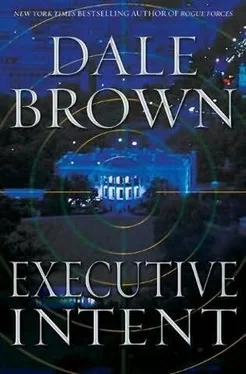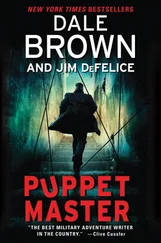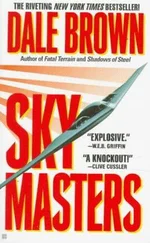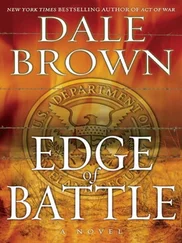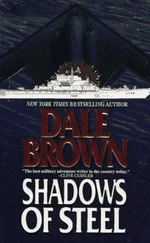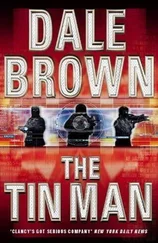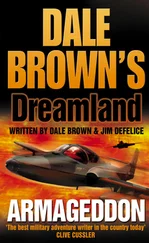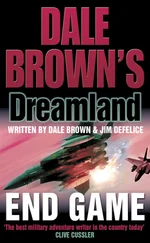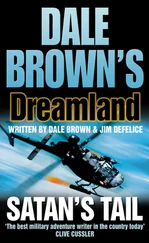“I don’t believe Dr. Masters has any CIDs-that wasn’t a Sky Masters creation,” Patrick explained. “The Air Battle Force bought the last remaining units, the ones used in Iraq.”
“If the Air Force bought them, General McLanahan, how did Scion Aviation International, the contracting group you headed, get them?” Dobson asked.
Patrick glanced at Dobson, hesitated again, then decided to ignore the question. “I know Colonel Jason Richter and Lieutenant Colonel Charlie Turlock at the Army Transformational Battlelab were in charge of what remained of the CID project now at Aberdeen Proving Ground,” he said, “but I haven’t been in contact for some time.”
“You had some other pretty interesting devices, if I recall,” Phoenix went on. “In particular, a way to insert commandos into enemy territory from long distances and fly them out again?”
“What exactly do you have in mind, sir?” Patrick asked.
“Just brainstorming here.”
Patrick’s expression slowly changed from distrust, confusion, and caution to one of curiosity and finally to pleasure. “I believe you’re referring to the MQ-35 Condor, sir,” he said with a slight smile. “We could load up four commandos and their gear and drop them from a stealth bomber, and it could glide up to two hundred miles. If it survived the landing without much damage, it could take off again and fly out again.”
“That’s the one.”
“That was a Lake project,” Patrick said. Even on a secure link, most veterans of the High Technology Aerospace Weapons Center hesitated to use the term “HAWC” or the other common names, “Dreamland” or “ Groom Lake,” because of the intense security surrounding America ’s most secure military aerospace testing facility. “I haven’t had top-level security clearance for some time, so I don’t know if the Condor is still active.”
“Jon Masters would know, wouldn’t he?”
“I don’t know, sir. Everything is pretty compartmentalized out there.”
“We’ll check.”
“I don’t know if I have the security clearance for that place,” Dobson said, “if it’s the place I think you’re referring to.”
“You will,” Phoenix said, “and you will, too, Patrick, if it’s necessary.”
“They don’t do much on air-combat systems these days out there, sir,” Patrick said. “They concentrate on more support services, intelligence, unmanned aerial vehicles, and tactical transport. I believe Brigadier General Martin Tehama is still commanding.”
“Not a friend of yours, if I remember correctly.”
“We have different leadership styles and unit philosophies, yes, sir.”
“What about that other group you know, the ones that helped us out over Turkey?”
Patrick’s smile disappeared, and his mouth dropped open ever so slightly as he looked at Dobson again. “Sir, are you certain you want to bring that up?” he asked.
The vice president turned to Tim Dobson. “You’re standing at the edge of the river Rubicon, Mr. Dobson,” he said seriously. “The point of no return. You will learn things that could mark you as a legitimate threat to persons who wield great power, persons from whom even my office might not be able to protect you. You could say no and your life and career will be unaffected, I guarantee that. But if you say yes, your life will change in ways even you could never imagine.”
“Sir, I don’t think we should be pressuring Mr. Dobson like this,” Patrick said. “He’s in the White House Situation Room sitting next to the vice president of the United States. Do you really expect him to say no to anything you ask him?”
“Excuse me, General McLanahan, but I think I’m capable of making that decision,” Tim said, with a determination in his voice that surprised the others. “I’ve been in the CIA since I graduated from Rutgers fifteen years ago. I voted for President Gardner, but I know this is the most uncomfortable I’ve felt about the future of the United States since President Thorn. The vice president is asking me questions about things I hoped I’d been asked about years ago.” He turned to Phoenix. “I say yes, Mr. Vice President.”
“And how do you know you can trust Mr. Dobson, sir?” Patrick asked. “He’s on your space-policy-review panel, but maybe he would find a way to use this information to advance his career faster.”
Ken Phoenix looked at Dobson carefully, then nodded. “I don’t know I can trust him, Patrick…but I feel I can,” he said finally. “I had the same feeling about you, back in President Martindale’s White House, and you haven’t let me down.” He looked at his watch. “I’ve got fifteen minutes before my next meeting. What are you up to today, Patrick?”
“I’m available for anything you need me for, sir.”
“Good. The president agreed to send the Seventh Air Expeditionary Squadron out to the Middle East to shadow the Russians. I don’t know where they’ll be based, but they’re going to put on a little show of force to the Chinese and Russians.”
“Good idea, sir,” Patrick said.
“That might make them available for other missions,” Phoenix said. “The president is getting too open and chummy with the Russians and Chinese for my liking, so I’d like to think up some options. Let’s go back to my office and we’ll get hooked up again there. I’ll get you started, and then you can take over, Patrick. You’ve got your old security clearance back again, General.”
“Thank you, sir,” Patrick said.
“You, too, Mr. Dobson-you’re going to wear the supersecret decoder ring from now on,” the vice president said. “Whatever you thought your future looked like, it doesn’t anymore.” Both he and Patrick could see Dobson do a nervous swallow, but he still nodded determinedly. “Patrick, tell Mr. Dobson what we need and find out how we can get it; draw up a plan, and I’ll brief the president. Let’s see how serious the president is about getting to the bottom of Russia ’s and China ’s plans against our satellites.”
OVER THE GULF OF ADEN, 400 MILES EAST OF ADEN, REPUBLIC OF YEMEN
DAYS LATER
“Attention unidentified aircraft, attention unidentified aircraft,” the stern, heavily accented voice said in English on 243.0 megahertz, the international UHF emergency frequency, “approaching the fiftieth meridian, flying west at thirty-five thousand feet, this is patrol aircraft of the navy of the Russian Federation Southern Fleet on GUARD. You are on course to approach a Russian navy aircraft carrier task force. If you do not alter course, you will be intercepted, and if your identity or stores cannot be verified as peaceful, you will be forced to alter course. The use of deadly force is authorized and you may be fired on without warning. Respond on UHF GUARD frequency, please.”
“Our friends are calling,” Lieutenant Colonel Gia “Boxer” Cazzotto, aircraft commander of a U.S. Air Force EB-1C “Vampire” bomber, said on intercom. Beside her in the cockpit of the highly modified long-range strategic bomber was Major Alan “Frodo” Friel, the mission commander. Boxer was the commander of the 7th Air Expeditionary Squadron, a small bomber unit based at Air Force Plant 42 in Palmdale, California. Originally organized to flight-test refurbished B-1 bombers taken out of storage, the 7th AES-being one of only a handful of American heavy bomber squadrons still in existence-was occasionally tasked for real-world missions.
The EB-1C Vampire bomber was one example of a state-of-the-art refurbished design. To date, fifteen airframes had been taken out of flyable storage, modified, and upgraded to perform a dazzling array of missions, making it a true “flying battleship.” Although originally designed for four crewmembers, this EB-1C bomber was so computerized and automated that all attack and defensive functions could be performed by just two-or, operated as an unmanned attack aircraft, with none.
Читать дальше
